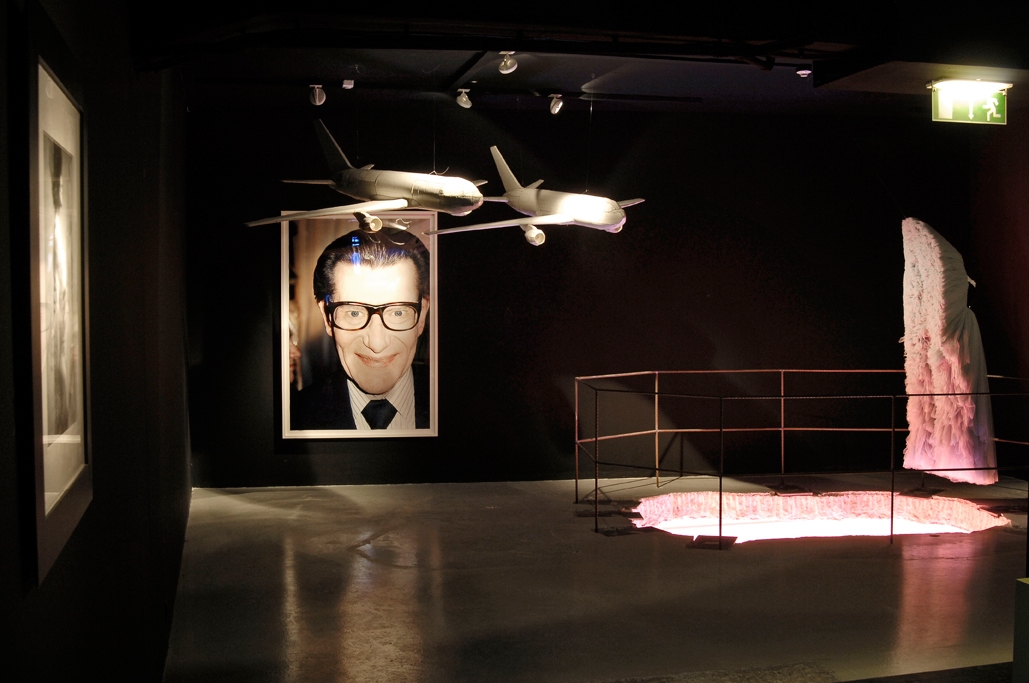Jean Baudrillard’s The System of Objects (1968) has long served as a prescient exploration of object commodification. Here, architect-writer-curator Andreas Angelidakis takes the book as a ‘carpet’ underlying his sweeping exhibition of the same name – touted as a reload of founder Dakis Joannou’s collection, which spans many objects of contemporary art, of course, but also design, fashion and ephemera. A reload it is. It’s also an expansive renovation. Angelidakis and cocurator Maria Cristina Didero have broken through walls, reversed room sequence, exposed rough and raw architectural elements and built temporary structures to create a labyrinth of spaces showcasing hundreds of “peripheral” works by 214 artists, culled from Joannou’s collection.
A dark warehouse entrance leads past Josh Smith’s untitled stop sign from 2012 and over a metal bridge to Pawel Althamer’s ominous Evil (2012), a scary, seated, gas-masked figure in a low-lit room; a separate room wallpapered with DESTE archive snapshots (a younger Massimiliano Gioni, lots of Jeffrey Deitch) immediately lightens things up. A nearly unlit hall sparely installed with sculptures and fashion objects overlooks (through a hole in the floor left over from a former exhibition) an airy space packed with seminal late-1960s furnishings.
It’s as if the curator has simulated a ‘virtual’ experience in ‘real’ life (or made the real into a simulated virtual experience)
Narrow rooms lead to dead-end video spaces. Larger spaces use provisional architecture, like wood ‘cages’ (essentially rooms whose drywall is missing) to display works in miniexhibitions. One is packed with wonderful works on paper by Sean Landers, Paul Chan, Christiana Soulou and many others; leave this ‘room’ and the works’ versos, including labels, are visible.
The warren of wonders continues, works by David Salle, Mark Manders, Jeff Koons, David Altmejd, Urs Fischer, Haim Steinbach, Linder, Viktor & Rolf, Martin Margiela and an array of Greek artists swirling by. In a trapezoidal room, plaster putti on plinths – which young Joannou apparently collected from flea markets in Rome – are juxtaposed with Alexander McQueen hoof shoes and a small Soulou drawing. On the roof, the focal point is a vast photograph revealing frolicking figures in a latter-day garden of earthly delights, amid design objects we just saw in different spaces below, in a Maurizio Cattelan photo shoot for the artist’s Toiletpaper magazine.
By now at the latest, the show starts feeling like another place in which images and ‘objects’ (or images of objects) are in such convoluted, multilayered abundance: the Internet (no wonder: some of Angelidakis’s early architecture exists only in Second Life). It’s as if the curator has simulated a ‘virtual’ experience in ‘real’ life (or made the real into a simulated virtual experience), and played with another Baudrillardian concept: here, however, the simulacra are doubled back on themselves.
The show ends in a large room. On a mountain of art-shipping crates (again with revealing, intriguing labels) are myriad videos, pictures and objects. The surrounding walls display a ‘museum’ of photographic reproductions from the Harlem art space Triple Candie; its seemingly random categorisation of knocked-off art-historical images immediately calls Aby Warburg’s Mnemosyne Atlas (1924–9) to mind. A George Condo piece of Joannou and his wife overlooks it all. The confusing paths, the flurry of images, the voyeuristic look at a lifetime of object-collection: is it good, is it worthwhile, do we like it? As a quick read into the catalogue (where images from the exhibition are superimposed on sepia iPhone images of Angelidakis’s own beachworn copy of The System of Objects) reveals, Angelidakis, too, knows that sometimes when we click ‘like’, we forget; sometimes we remember. Regardless of where we find them, when the visuals are compelling, we keep coming back to look again, or look for more.
This review originally appeared in the September 2013 issue.
